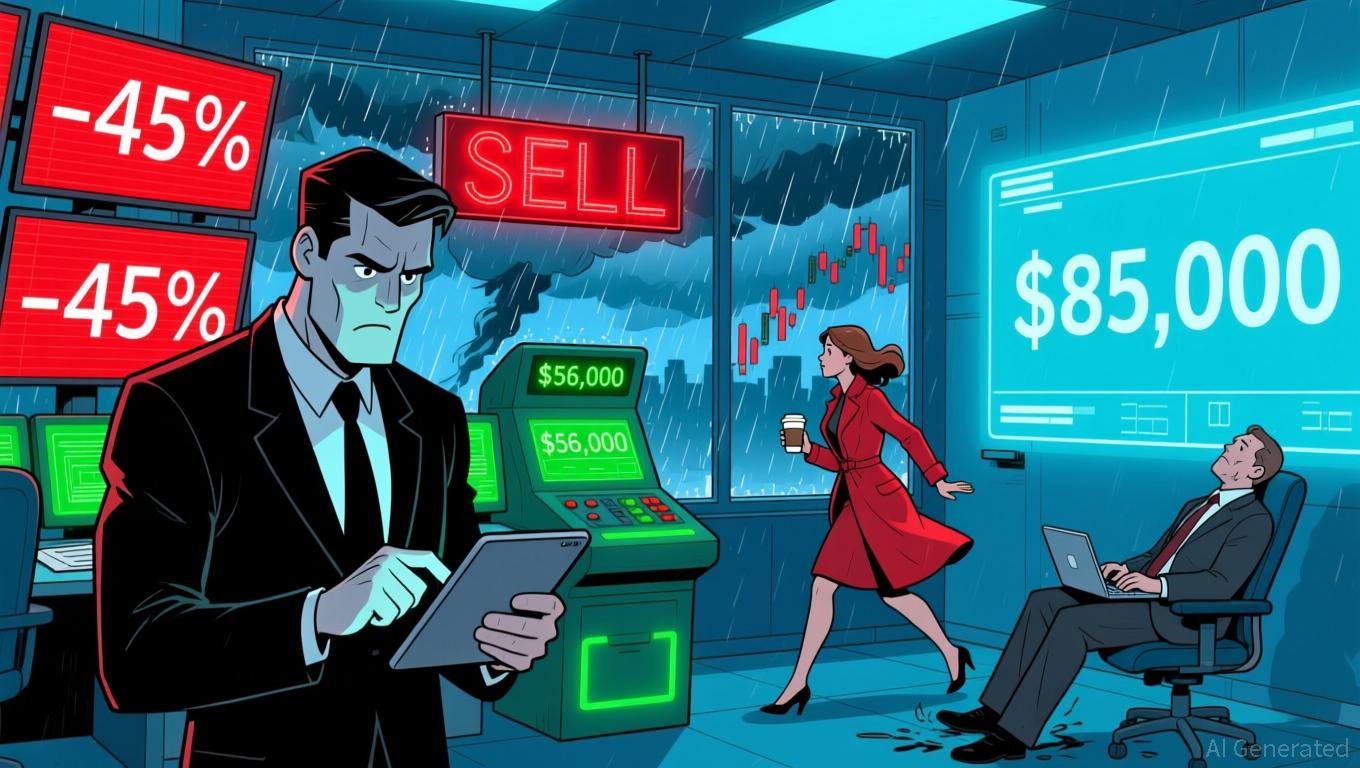Saudi-US AI Agreement Seeks to Transform the Balance of Power in Global Technology
- Elon Musk's xAI partners with Saudi's Humain to build a 500MW AI data center using Nvidia chips, marking Saudi Arabia's largest AI infrastructure investment. - The project faces U.S. export restrictions but may gain Trump administration approval, enabling Saudi Arabia to advance its "most AI-enabled nation" vision. - The collaboration aims to create a national AI layer for government/enterprise use, aligning with Saudi Vision 2030 and U.S. tech ecosystem partnerships. - The forum also announced $575B in
Elon Musk's
Musk introduced the initiative together with Nvidia CEO Jensen Huang at the event, which also included speeches from U.S. President Donald Trump and Saudi Crown Prince Mohammed bin Salman. The facility,
The collaboration must overcome a major challenge: U.S. restrictions on exporting advanced AI hardware. Yet,

The forum also emphasized broader economic cooperation between the U.S. and Saudi Arabia,
Saudi Arabia is leveraging its unique advantages—vast land, plentiful energy, and strategic location—to develop AI hubs that serve both regional and international needs, while the U.S. brings its technological expertise to foster innovation.
Musk stressed that the xAI-Humain initiative would help realize "the future of intelligence" by merging immense computing resources with advanced AI models. "This is the first project to roll out xAI's Grok across an entire nation," he said,
As more information about funding and scheduling is released, the project's outcome will hinge on securing U.S. regulatory clearance and aligning with Saudi Arabia's fast-paced digital transformation objectives. For now, the xAI-Humain data center stands as a testament to the merging of global strategy, business ambition, and technological progress.
Disclaimer: The content of this article solely reflects the author's opinion and does not represent the platform in any capacity. This article is not intended to serve as a reference for making investment decisions.
You may also like
Ethereum News Update: The Dangers of Leverage: Crypto Whale Suffers $26 Million Loss Amid Market Decline
- A crypto whale lost $26.348M by partially liquidating 15x leveraged BTC and 3x leveraged ETH positions amid declining prices. - The whale's $250M portfolio faces $3.734M unrealized losses if liquidated, with a $65,436 WBTC liquidation threshold. - Broader market trends show $260.66M ETH ETF outflows and ETH/BTC prices below $2,800 and $87,000, worsening leveraged traders' risks. - A HyperLiquid user lost $4.07M from a 6x ETH long position, reflecting systemic leverage challenges as macroeconomic factors

Bitcoin Updates: U.S. Market Pessimism Contrasts with Asian Confidence as Bitcoin Drops Near $85,000
- Bitcoin's price fell to $85,000 in Nov 2025, down 7% in 24 hours and 20% monthly, driven by dormant wallet sales and bearish derivatives bets. - Surging sell pressure from inactive wallets and rebalanced derivatives toward puts highlight deteriorating market structure and liquidity. - Fed rate-cut uncertainty and regional divergences—U.S. bearishness vs. Asian buying—exacerbate volatility amid $565M in liquidations. - Analysts split on recovery: some see consolidation near $85K-$100K, others warn of a po

Aave News Today: Aave’s High-Return Application Offers a Solution to Inflation’s Impact on Savings
- Aave , a top DeFi lending protocol, launched a consumer savings app offering up to 9% APY, competing with traditional banks and fintech platforms. - The app targets mainstream users with zero minimum deposits, real-time compounding, and $1M balance protection, aiming to simplify DeFi accessibility. - While outperforming traditional savings rates, Aave's insurance transparency and security history raise concerns amid crypto's volatile trust landscape. - This move reflects DeFi's neobank trend, with high-y

The PENGU USDT Sell Alert: Is This a Red Flag or Simply a Market Adjustment?
- PENGU USDT's sell signal highlights concerns over structural risks in stablecoin-backed crypto strategies amid volatility and regulatory shifts. - The token's 28.5% decline since October 27, coupled with weak technical indicators, reflects broader fragility in algorithmic stablecoins and leveraged positions. - Growing institutional adoption of asset-backed alternatives like USDC contrasts with PENGU's speculative NFT-driven model, which lacks robust collateral or compliance. - While Fed policy easing may